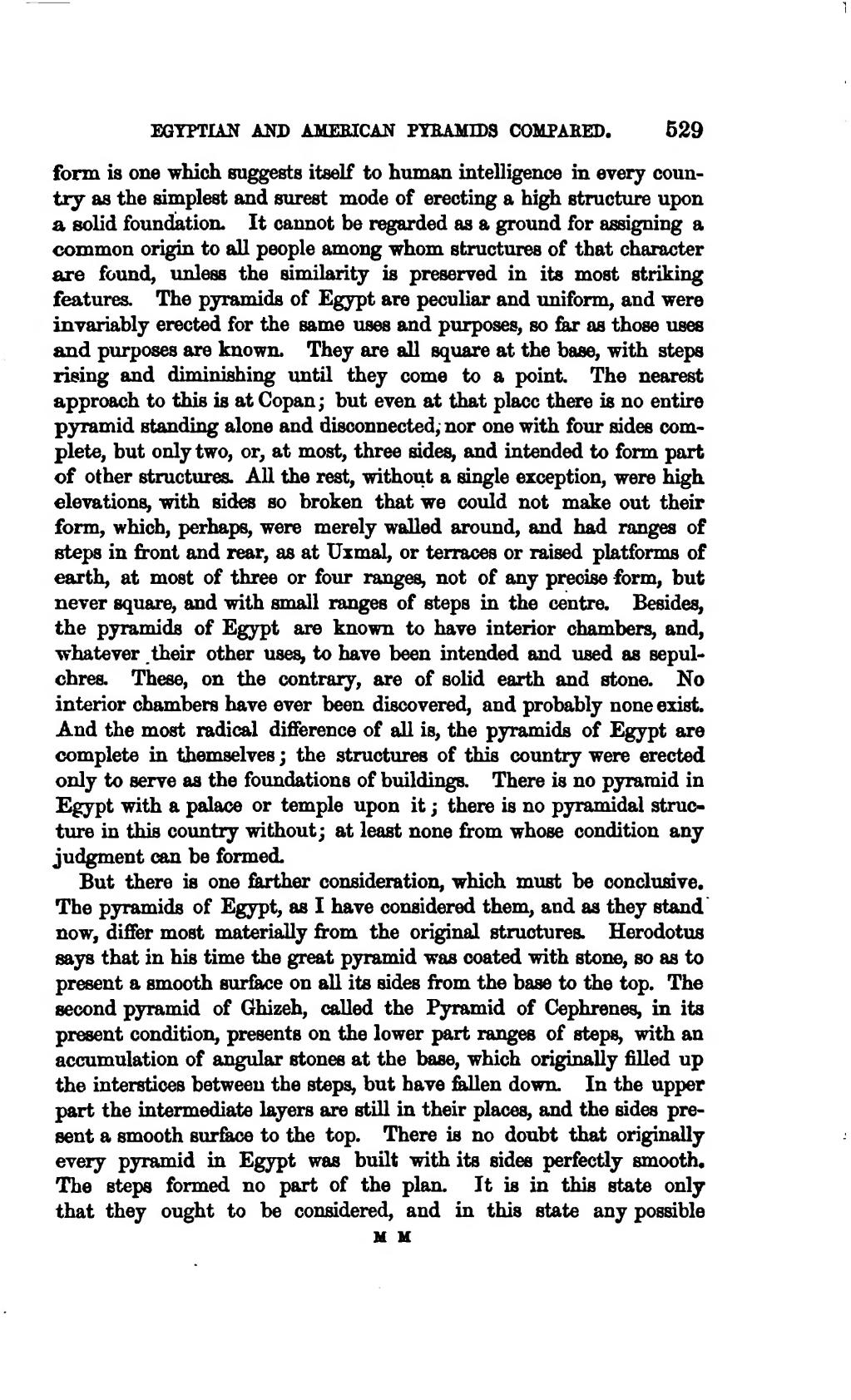form is one which suggests itself to human intelligence in every country as the simplest and surest mode of erecting a high structure upon a solid foundation. It cannot be regarded as a ground for assigning a common origin to all people among whom structures of that character are found, unless the similarity is preserved in its most striking features. The pyramids of Egypt are peculiar and uniform, and were invariably erected for the same uses and purposes, so far as those uses and purposes are known. They are all square at the base, with steps rising and diminishing until they come to a point. The nearest approach to this is at Copan; but even at that place there is no entire pyramid standing alone and disconnected, nor one with four sides complete, but only two, or, at most, three sides, and intended to form part of other structures. All the rest, without a single exception, were high elevations, with sides so broken that we could not make out their form, which, perhaps, were merely walled around, and had ranges of steps in front and rear, as at Uxmal, or terraces or raised platforms of earth, at most of three or four ranges, not of any precise form, but never square, and with small ranges of steps in the centre. Besides, the pyramids of Egypt are known to have interior chambers, and, whatever their other uses, to have been intended and used as sepulchres. These, on the contrary, are of solid earth and stone. No interior chambers have ever been discovered, and probably none exist. And the most radical difference of all is, the pyramids of Egypt are complete in themselves; the structures of this country were erected only to serve as the foundations of buildings. There is no pyramid in Egypt with a palace or temple upon it; there is no pyramidal structure in this country without; at least none from whose condition any judgment can be formed.
But there is one farther consideration, which must be conclusive. The pyramids of Egypt, as I have considered them, and as they stand now, differ most materially from the original structures. Herodotus says that in his time the great pyramid was coated with stone, so as to present a smooth surface on all its sides from the base to the top. The second pyramid of Ghizeh, called the Pyramid of Cephrenes, in its present condition, presents on the lower part ranges of steps, with an accumulation of angular stones at the base, which originally filled up the interstices between the steps, but have fallen down. In the upper part the intermediate layers are still in their places, and the sides present a smooth surface to the top. There is no doubt that originally every pyramid in Egypt was built with its sides perfectly smooth. The steps formed no part of the plan. It is in this state only that they ought to be considered, and in this state any possible
